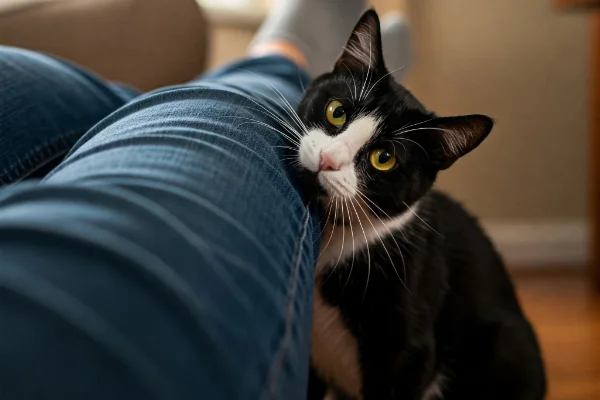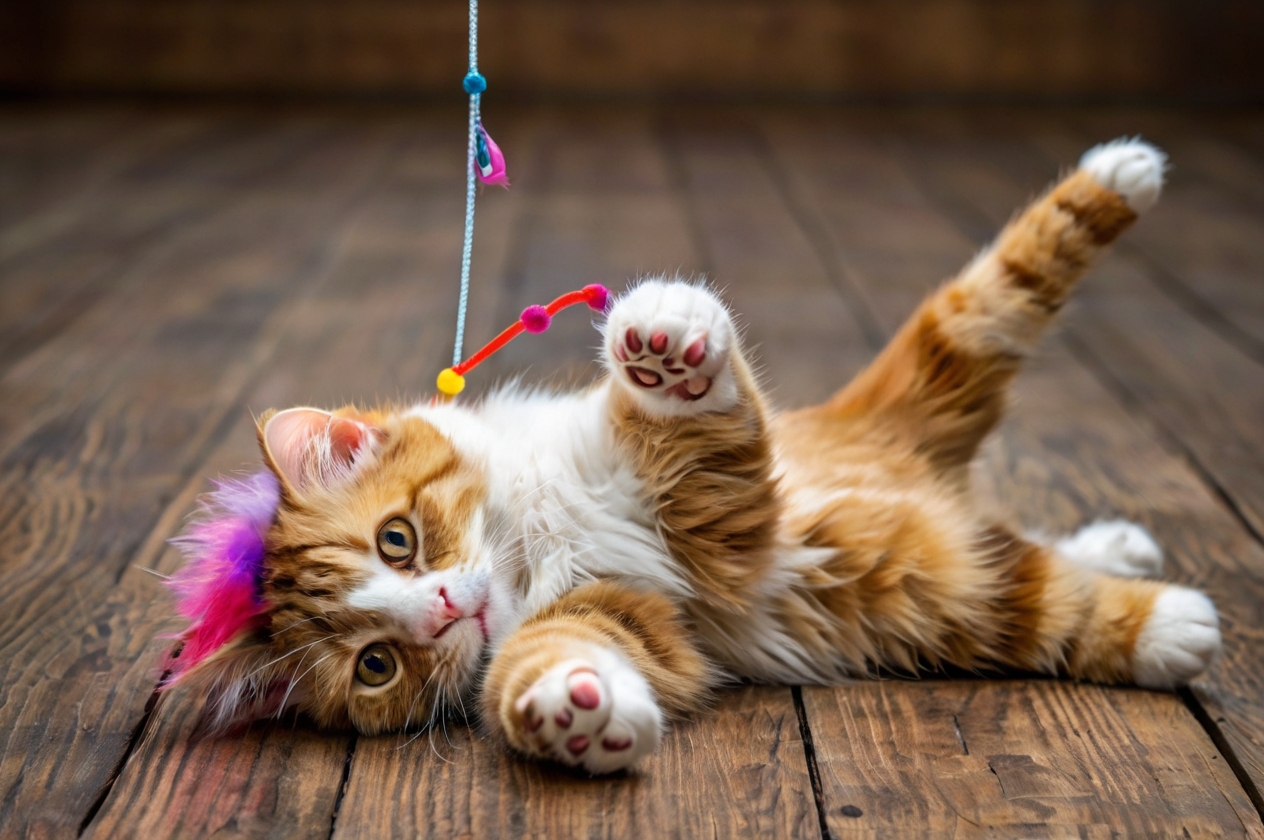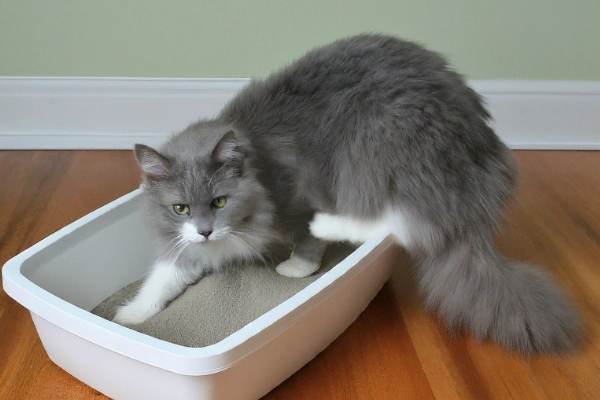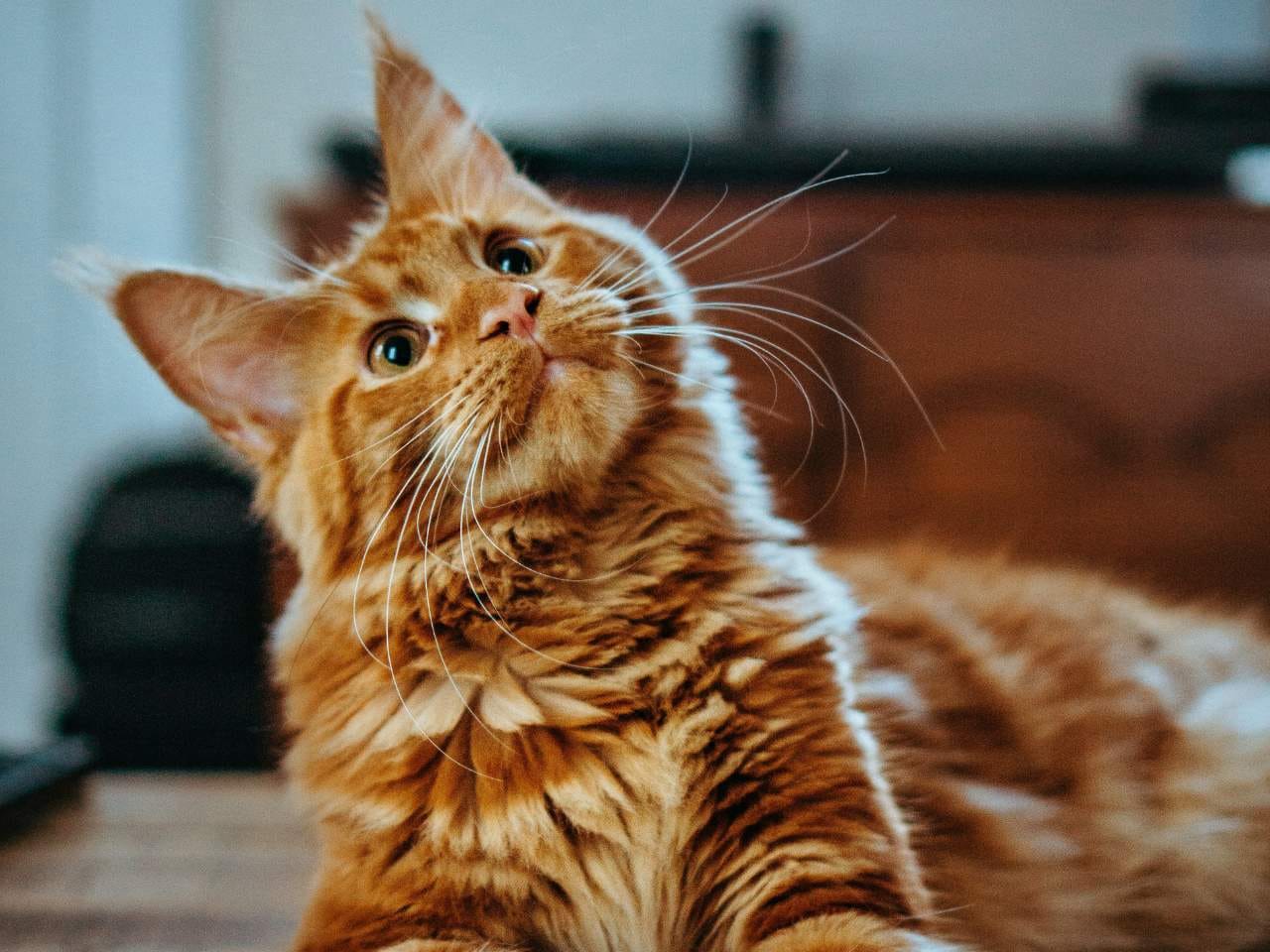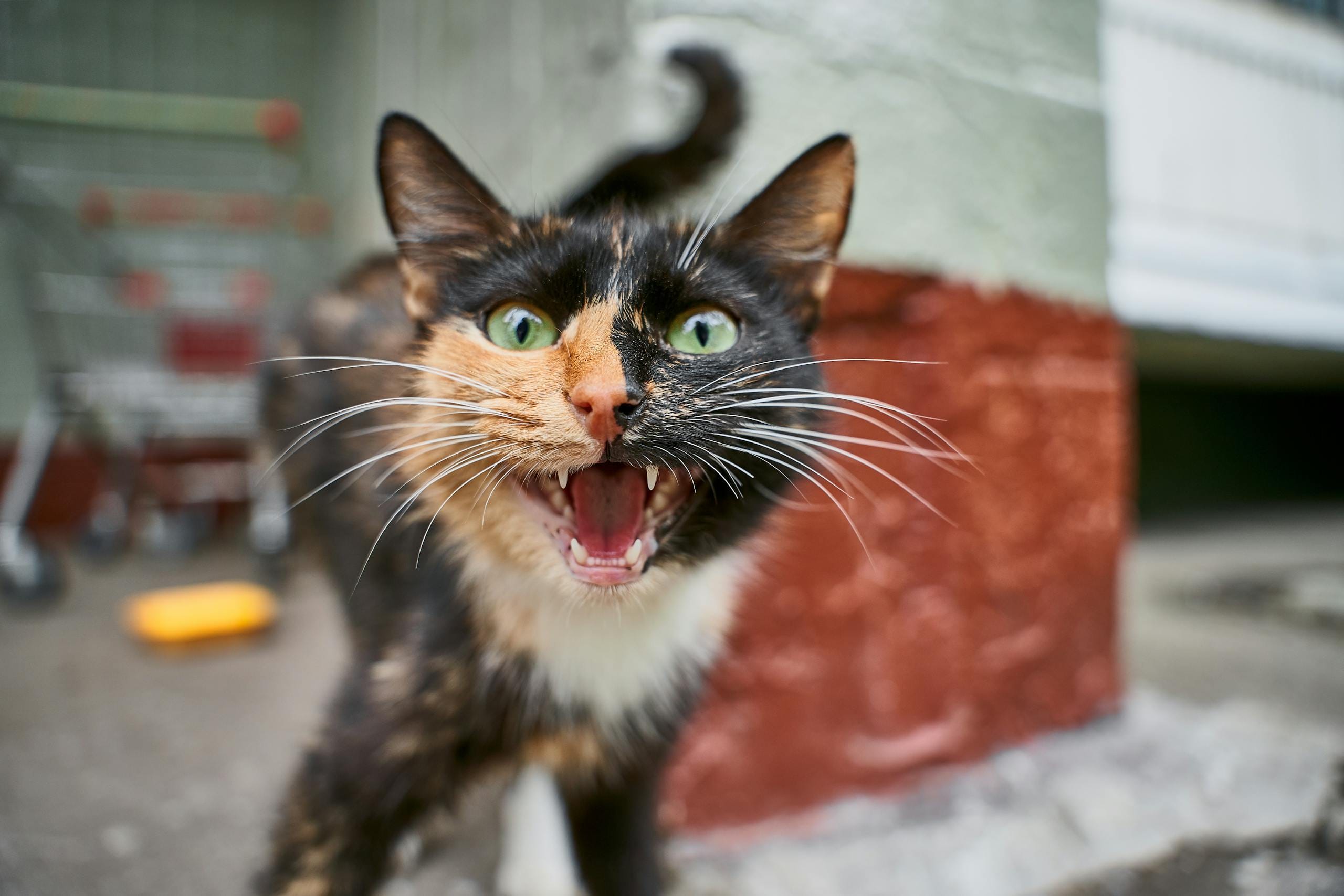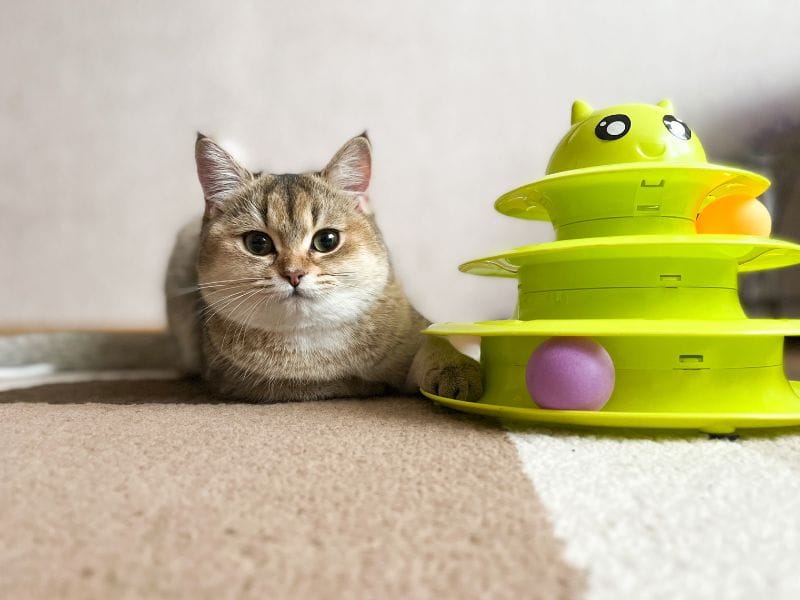How does a cat show affection? This is a question that has intrigued countless cat owners who seek to understand the unique ways their feline companions express love. Cats are often stereotyped as aloof or independent creatures, but those who share their lives with them know that cats have their own special methods of showing affection. Unlike dogs, who may wag their tails or shower you with kisses, cats rely on subtle gestures and behaviors to communicate their bond. From slow blinks to gentle purrs, these actions reveal the depth of their emotional connection and trust.
How does a cat show affection in ways that are both meaningful and endearing? The answer lies in their body language, vocalizations, and physical interactions. These behaviors are deeply rooted in their instincts and evolutionary history, making them fascinating to observe. Whether it’s through headbutts, kneading, or simply following you around the house, cats have a rich repertoire of affectionate actions that demonstrate their devotion. By learning to recognize these signs, you can deepen your bond with your furry friend and gain a greater appreciation for their emotional intelligence.
How Does a Cat Show Affection? Slow Blinks mean “I Love You”

One of the most well-known ways a cat shows affection is through the “slow blink.” Often referred to as a “cat kiss,” this behavior involves your feline narrowing their eyes slowly and then reopening them at an equally leisurely pace. In the wild, closing one’s eyes in front of another animal is a sign of trust, as it indicates vulnerability. When your cat gives you a slow blink, they are essentially telling you that they feel safe and secure in your presence.
To reciprocate this gesture, try giving your cat a slow blink back. Watch as they respond with another blink or even approach you for closer interaction. This simple exchange can deepen the bond between you and your cat, reinforcing the answer to the question: how does a cat show affection? The slow blink is just one example of how cats use their eyes to communicate love and trust.
Headbutting and Cheek Rubbing: Marking You as Their Own

Another unmistakable way a cat expresses affection is by rubbing their head or cheeks against you. Known as “bunting,” this behavior serves two purposes. First, it allows your cat to deposit scent markers from glands located on their face, effectively claiming you as part of their territory. Second, it’s a clear indication that they view you as a trusted member of their social group.
When your cat rubs their head against your hand, leg, or even furniture, they are saying, “You belong to me.” This act of marking also reinforces their sense of security and attachment. If you’ve ever asked yourself, “How does a cat show affection?” observing this behavior provides a compelling answer. Cats reserve this intimate gesture for those they hold dear, so consider it a high compliment when your feline engages in bunting.
Purring: More Than Just Contentment
Purring is often associated with happiness, but it’s also a powerful way for a cat to show affection. While cats typically purr when they’re relaxed or being petted, some studies suggest that purring can also serve as a form of communication. For instance, mother cats purr to soothe their kittens, creating a calming effect that strengthens the maternal bond.
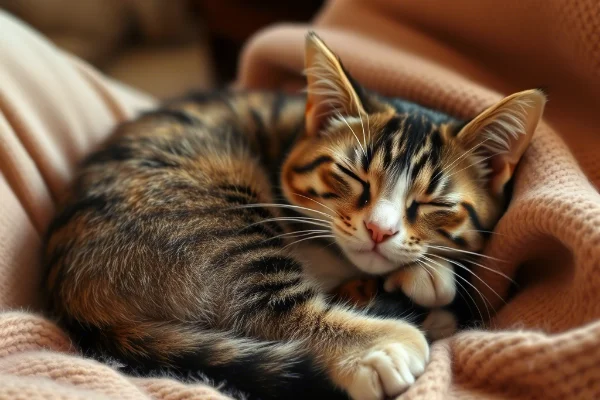
When your cat curls up next to you and begins to purr, they are likely expressing comfort and contentment in your company. However, purring isn’t always limited to positive emotions; sometimes, cats purr when they’re anxious or unwell as a self-soothing mechanism. To determine whether your cat’s purring is a sign of affection, pay attention to their overall body language. Relaxed ears, half-closed eyes, and a loose posture are all indicators that they’re feeling safe and connected to you. Understanding how a cat shows affection through purring adds another layer to the complexity of feline communication.
Kneading: A Throwback to Kittenship
If your cat kneads your lap or a soft blanket while sitting beside you, take it as a sign of deep affection. Kneading is a behavior that originates from kittenhood when young cats press their paws against their mother’s belly to stimulate milk flow. As adults, cats continue this behavior as a comforting ritual, often accompanied by purring.
While kneading might be painful if your cat uses their claws, it’s important to remember that this action is a testament to their trust and fondness for you. Placing a thick blanket or towel on your lap can help protect your skin while allowing your cat to indulge in this instinctual behavior. When pondering how a cat shows affection, kneading stands out as one of the most heartwarming examples of feline love.
Following You Around: Shadowing Out of Devotion
Does your cat follow you from room to room, seemingly unable to let you out of their sight? Far from being clingy, this behavior is a strong indicator of affection. Cats are naturally curious animals, but when they choose to trail after you specifically, it’s because they value your companionship. According to vet cats are social animals who form strong attachments to their owners. When a cat follows you around, it’s a sign that they see you as a source of comfort and security
This shadowing behavior is particularly common in indoor cats, who rely on their owners for entertainment, food, and emotional support. By staying close to you, your cat is demonstrating that they see you as a source of comfort and security. If you’ve ever wondered how a cat shows affection in everyday interactions, this constant presence is a clear sign of their attachment.
Grooming You: An Act of Trust and Care
In multi-cat households, mutual grooming (or allogrooming) is a common way for felines to strengthen social bonds. Interestingly, some cats extend this behavior to their human companions by licking their hands, arms, or hair. Known as “grooming,” this act is a profound expression of trust and affection.
When your cat licks you, they are treating you like a member of their family. This behavior is especially meaningful because cats are meticulous about hygiene and only groom individuals they deem worthy of their care. While the sensation of a rough tongue might not always be pleasant, it’s a reminder of how deeply your cat values your relationship. Asking “How does a cat show affection?” leads us to recognize grooming as one of the most intimate forms of feline bonding
Gift-Giving: A Hunter’s Tribute

For outdoor cats or those with access to the outdoors, bringing home small “gifts” such as mice, birds, or insects is another way they show affection. While this behavior might seem unsettling to some owners, it’s important to understand its significance. In the wild, cats bring prey back to their den to teach their young how to hunt. When your cat presents you with a gift, they are essentially treating you as part of their family and attempting to provide for you.
Though you may not appreciate these offerings, it’s crucial to respond positively to avoid discouraging your cat’s desire to connect with you. A simple thank-you and redirection to playtime with toys can reinforce your bond without encouraging unwanted hunting habits. This quirky yet meaningful behavior underscores the complexity of answering the question: how does a cat show affection?
Vocalizations: Meows and Chirps of Affection
Cats are known for their wide range of vocalizations, from chirps and trills to meows and purrs. Each sound carries a specific meaning, and many of them are used to express affection toward their owners. For example, a soft chirp or trill is often a greeting reserved for familiar faces, while prolonged meowing can indicate excitement or a desire for attention.
Some cats develop unique “conversations” with their owners, using distinct tones and pitches to convey different messages. Paying attention to these vocal cues can help you better understand your cat’s needs and emotions. When considering how a cat shows affection, vocalizations offer valuable insights into their inner world.
Sleeping Near You: Seeking Comfort and Security
A cat’s choice of sleeping location reveals a lot about their feelings toward you. Many cats prefer to nap near their owners, whether it’s on the couch, at the foot of the bed, or even directly on top of you. This behavior stems from their instinctual need for warmth and safety, as well as their desire to stay close to those they trust.

Sharing your personal space with your cat fosters a sense of closeness and mutual dependency. Even if your cat prefers to sleep slightly apart from you, simply choosing to rest in the same room is a sign of affection. Reflecting on how a cat shows affection, their sleeping habits highlight their reliance on you for emotional support.
Conclusion: Decoding Feline Affection
Understanding how a cat shows affection requires tuning into their subtle cues and appreciating the depth of their emotional intelligence. From slow blinks and headbutts to purring and kneading, cats have countless ways of expressing their love for their human companions. These behaviors not only strengthen the bond between you and your cat but also remind us of the unique joy that comes from sharing our lives with these enigmatic creatures.
By recognizing and responding to your cat’s displays of affection, you can nurture a deeper connection and create a harmonious environment where both you and your feline friend thrive. So the next time you find yourself wondering, “How does a cat show affection?” take a moment to observe their actions—you might be surprised by just how much they adore you.
If you want to understand more about your feline body language, you also can read our article:
Discover cat body language

